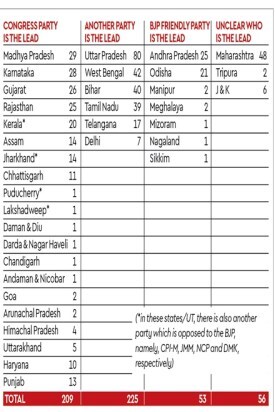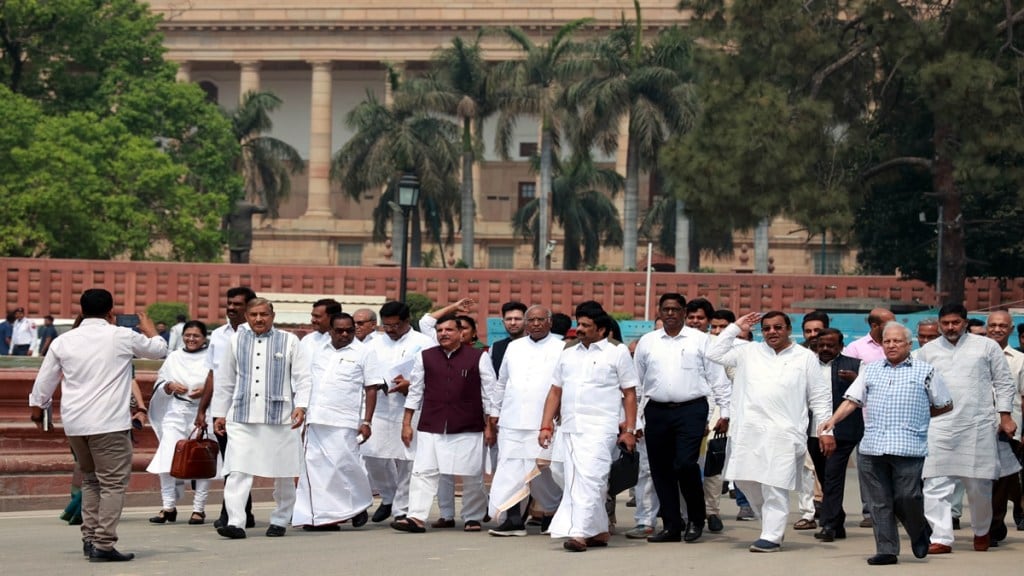The oldest party in the country is the Indian National Congress. The biggest party in the country is the Bharatiya Janata Party, also by far the richest. In the last Lok Sabha elections (2019), all BJP candidates together won 37.4% of the votes that were polled. The Congress’ candidates won 19.5% of the votes. There are regional and state-specific parties that are quite influential and rule many states.
India’s electoral map is a multi-coloured political mosaic. The BJP’s aim — not concealed — is to make it a monochromatic mosaic. The Opposition parties’ (those who are opposed to the BJP) goal is to replace the BJP at the Centre and form a liberal, progressive and inclusive government.
The challenge
In every election since 2014, the BJP seeks votes not in the name of the party or its manifesto but in the name of Mr Narendra Modi. It has gone to the extent of appealing to the voters of Karnataka — the state will elect a new government on May 10 — to “hand over Karnataka to Modi”. For the BJP, it is Mr Modi who is the candidate in every constituency. The BJP thinks that ‘Modi everywhere’ is enough to achieve its aim.
Also read: Across the aisle by P Chidambaram: Which law, whose order?
As of today, it appears that the Opposition parties do not have a common leader/candidate behind whom they are willing to rally. This may change, but we are looking at the position today. Minus this seeming disadvantage, the Opposition parties have many pluses and strengths, and this essay is intended to explore how the Opposition parties can leverage their strengths.

Some extreme options are ruled out. The Opposition parties will not, and cannot, unite to form a single new party, a la 1977, when the Janata Party was formed. None of the Opposition parties will cede the entire space in a state to another party. Despite appeals to forbear, AAP contested the elections in Uttarakhand (2022) and Karnataka (2023) and TMC in Goa (2022). So, while total Opposition unity is desirable, it does not seem feasible.
Opposition unity platform
The alternative is an Opposition Unity Platform (OUP). An OUP will need each party to make concessions to others and gain from the concessions made by the others. The outline of the scheme is roughly as follows: create four columns of states and union territories and put each state/UT in the appropriate column (the number denotes the number of LS seats)
Of course, it must be acknowledged that the BJP is more dominant than the ‘Lead’ Opposition party in many of the states (it has 302 MPs in the Lok Sabha).
In my view, if an OUP is formed, the Congress can legitimately expect to take the lead in fighting the BJP in about 209 seats. Likewise, another Opposition party among SP, TMC, RJD, JD(U), DMK, BRS and AAP can take the lead in about 225 seats. In three states, there are 2 or 3 parties that are in a position to take the lead to challenge the BJP. In seven states with 53 seats, the winner may turn out to be a covert ally of the BJP.
Also read: Across the aisle by P Chidambaram: The rhetoric and the reality
Cardinal rule
NEXT STEP: all parties on the OUP must willingly subscribe to the rule that while the Lead party will contest a majority of the seats in the state concerned, the Lead party will be obliged to give each seat to the candidate who has the best chance of winning the seat irrespective of the Opposition party to which the candidate may belong. Sometimes, this may mean denying the seat to the Lead party’s own member. The goal is not to maximise the number of seats that each Lead party may win but to defeat the BJP’s candidates in the maximum number of seats. All Opposition parties must stoop to conquer.
The arithmetic is simple. The BJP is in a position to win over 150 seats. Among the Opposition parties, the Congress alone is in a position to win over 100 seats. Every other Opposition party, even if there is a wave in its favour, can win a maximum of 40 seats but, together, they can win up to 150 seats. The BJP is not unbeatable. If the Opposition parties willingly subscribe to the plan that I have outlined, there is a credible path to victory.


